

Josh Nevett
CarExpert's top five large SUV reviews of 2025
2 Days Ago
Genesis has been in Australia for 12 months but it's been a slow start for the upstart Korean luxury brand. Now, it has its first SUV and it's gunning for the BMW X5 and Mercedes-Benz GLE. Does it stack up?
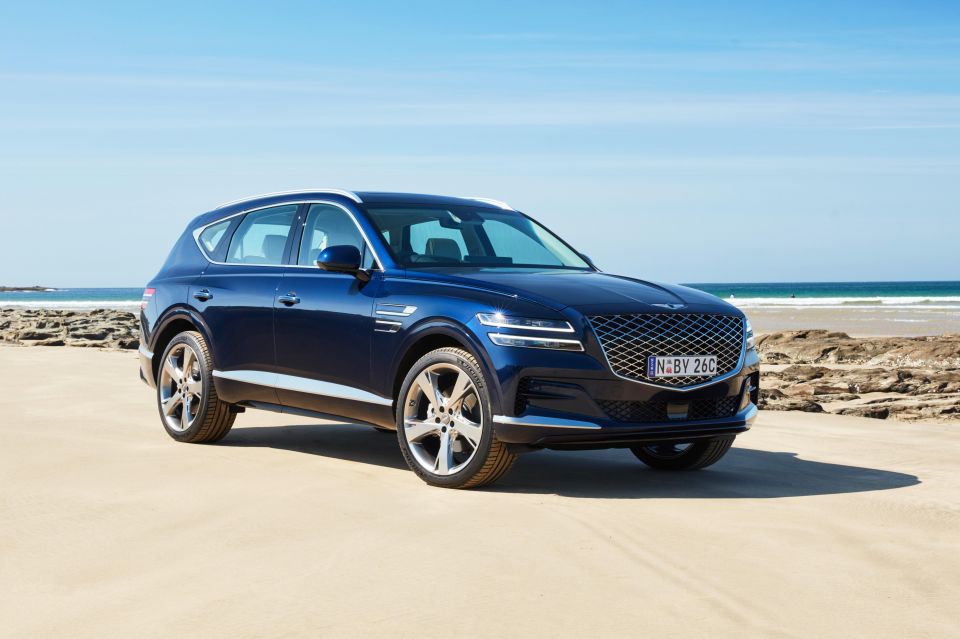
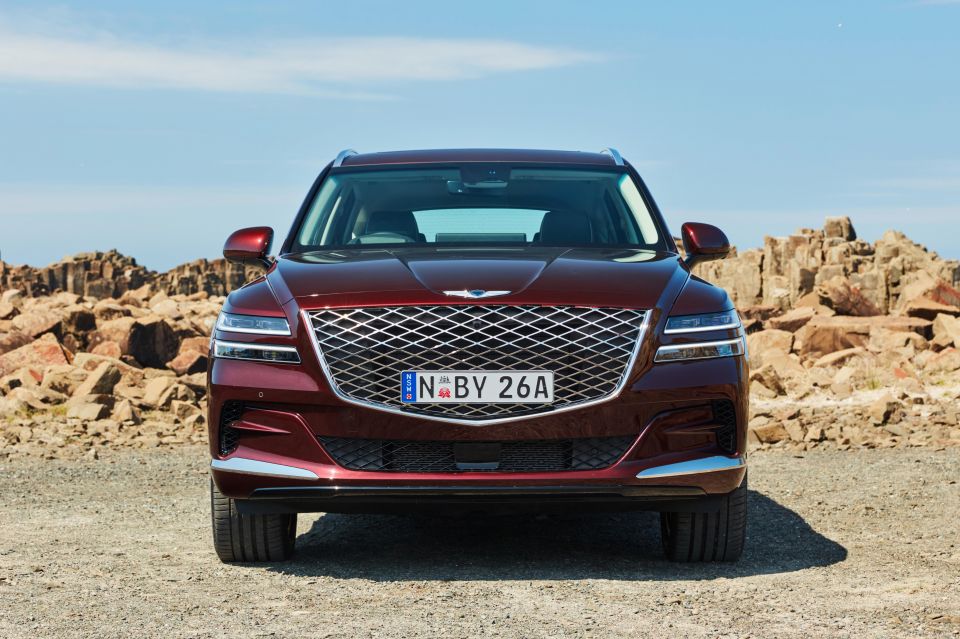

News Editor
New from
$90,476
excl. on-roads

News Editor
New from
$90,476
excl. on-roads


News Editor
New from
$90,476
excl. on-roads

News Editor
New from
$90,476
excl. on-roads
Quickly see how this car stacks up against its competition. Select any benchmark to see more details.
Where expert car reviews meet expert car buying – CarExpert gives you trusted advice, personalised service and real savings on your next new car.
It’s no secret Korea’s first luxury brand, Genesis, has gotten off to a slow start. Launching with a range consisting only of sedans in an SUV-hungry market will do that.
That means the GV80, Genesis’ first SUV, is crucial at helping firmly establish this luxury brand – especially considering its local CEO’s goals of surpassing Lexus in the luxury car market and establishing a 10 per cent market share.
The GV80 is not only the first SUV for the brand, it’s also thoroughly new. That means a new platform, new engines, and a new all-wheel drive system.

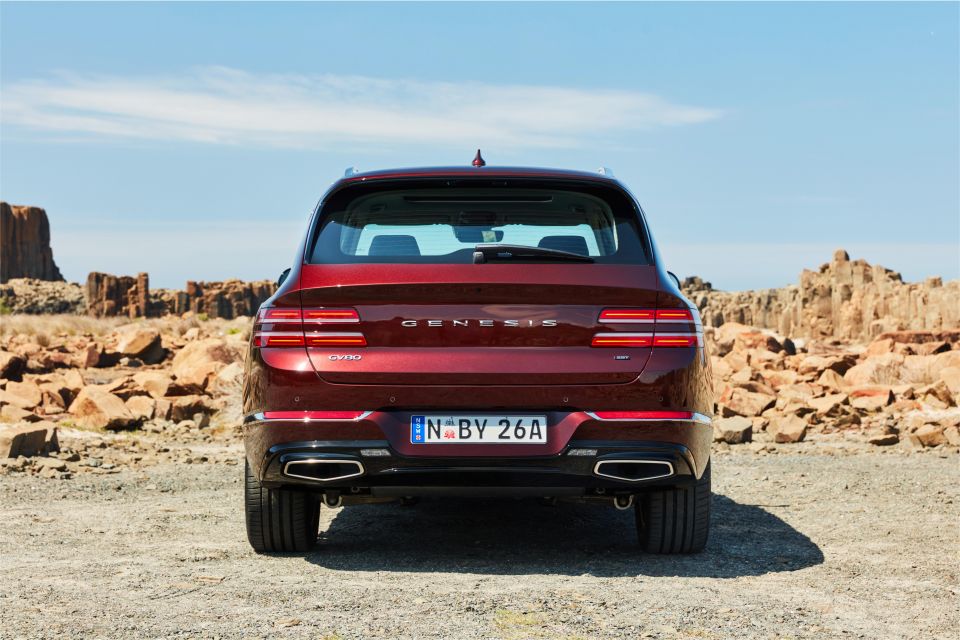
First impressions are good. Though some liken it to a baby Bentley Bentayga, the GV80 has a fresh look that’s both appropriately upscale and distinctive. The split headlight and tail light design is supposed to evoke the wings of the Genesis badge, while the prominent grille resembles the crest on the badge. The exhaust outlets are also crest-shaped, though they’re hidden on the diesel.
The diamond grille pattern is something Genesis refers to as “g-matrix”, and you’ll see this pattern echoed in the up-level 22-inch alloy wheels and the optional Nappa leather upholstery.
While Genesis wasn’t going for a sporty look, the GV80 has a sleek, rakish silhouette that makes it less visually bulky than rivals like the BMW X5 and Mercedes-Benz GLE and helps hide its size. The rear-wheel drive proportions are also in evidence – unlike Lexus, Genesis has committed to rear- and all-wheel drive for its SUV range.
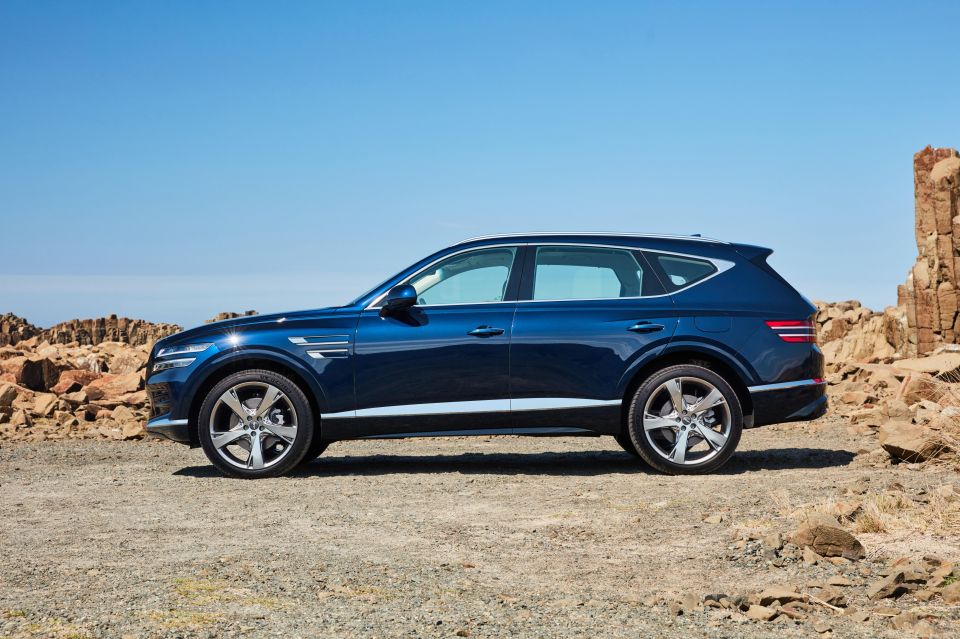
The company spells out its name across the tailgate in lieu of the Genesis badge, which seems like a move to help raise awareness of the brand.
Genesis may have an uphill climb ahead of it in tackling established luxury brand rivals but in looks alone, the GV80 looks right at home in the country club parking lot.
The 2021 Genesis GV80 range opens with the rear-wheel drive 2.5T at $90,600 before on-road costs. Adding a third row of seats also adds all-wheel drive, plus an extra $5000 to the price tag.
Stepping up to the turbo-diesel 3.0D will cost you $103,600 before on-roads, while the range-topping 3.5T is $108,600 before on-roads.
A single option package, called the Luxury Package, is available across the range and costs $10,000. Otherwise, the only option is matte paint at $2000. It’s available in Melbourne Grey, Brunswick Green, and Matterhorn White.
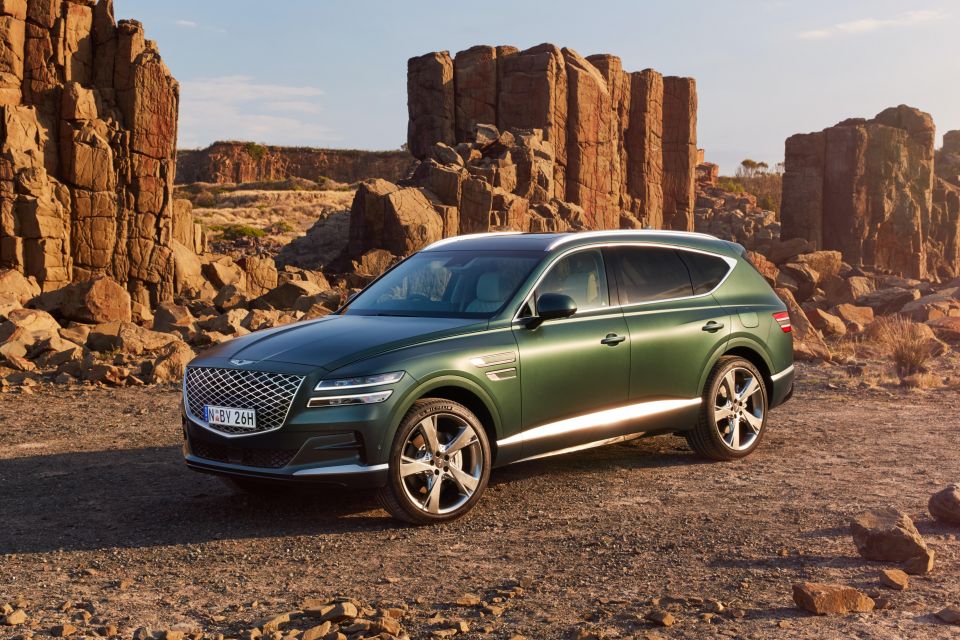
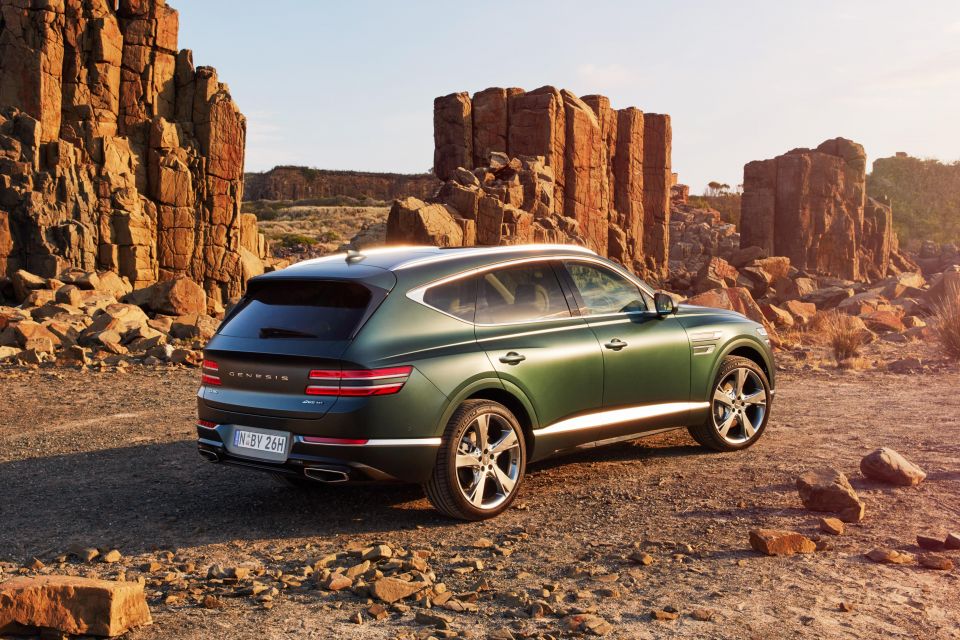
Standard shades include Uyuni White, Vik Black, Savile and Gold Coast Silvers, Himalayan Grey, Adriatic Blue, Lima Red and Cardiff Green. All are lovely but the greens are especially so.
There’s also a two-tone green interior called Smoky Green, available only with the Luxury Package, which pairs dark green seats with a brown dashboard. Indeed, most of the interior colours are two-tone with the only single-tone one being black – others include brown/beige, navy blue/brown and black/beige.
Four different open pore wood trims are available.
Genesis says the 3.0D will be the volume seller, accounting for 55 per cent of total sales. The rest will be split evenly between the petrol variants.
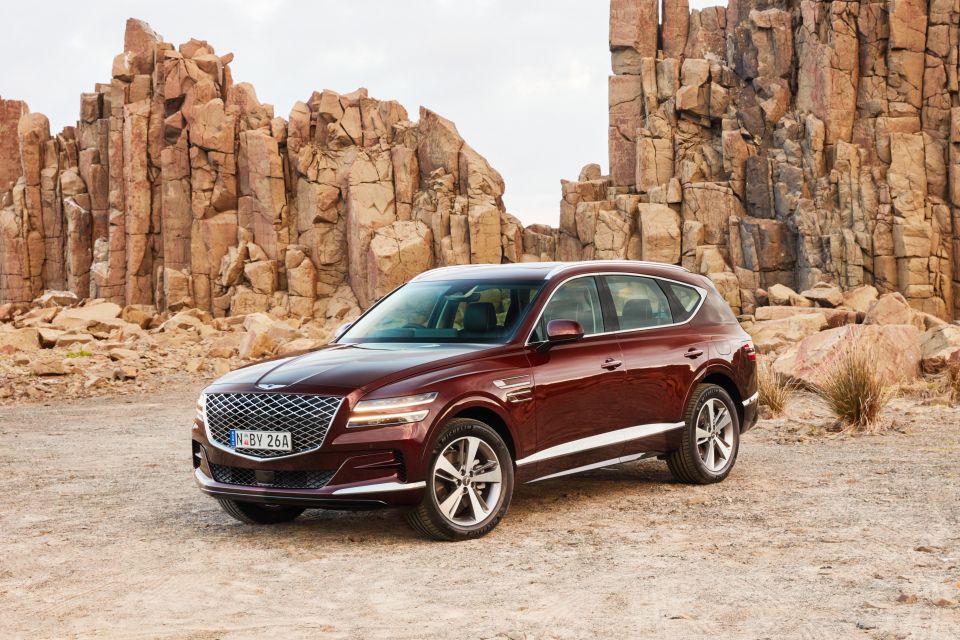
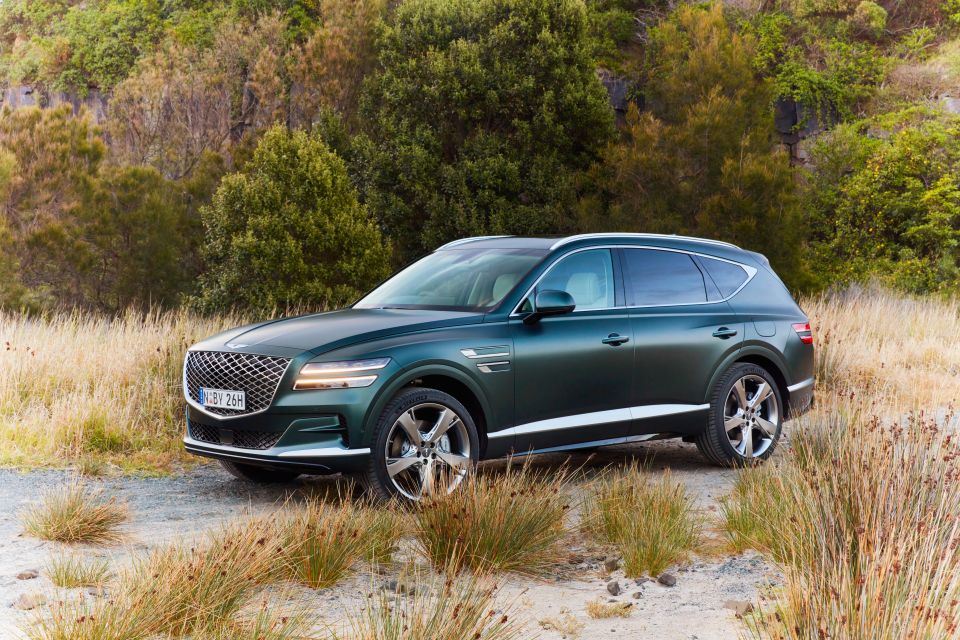
Buy your new car without the stress. It's fast, simple and completely free.

Great service from Travis and team, second time I have used this business would not hesitate to recommend them to anyone
Craig C.
Purchased a Ford Ranger in Sunshine Coast, QLD
CarExpert helped Craig save thousands on his Ford Ranger, now let us save you on your next new car.
Find a dealThe GV80 is available essentially in one trim level across four powertrain combinations, with the 3.0D and 3.5T only differing in adding adaptive suspension, an electro-mechanical limited-slip differential, and 22-inch alloy wheels instead of 2.5T models’ 20-inch alloys.
Both size wheels have a similar design, however, and the base wheels avoid looking under-sized.
Every GV80 comes standard with 12-way power-adjustable, heated and ventilated front seats with memory for the driver, as well as a panoramic sunroof, leather upholstery on the seats, dashboard and doors, adjustable ambient lighting, and open-pore wood trim.
There’s a 14.5-inch touchscreen infotainment system with Android Auto, Apple CarPlay, DAB+ digital radio and satellite navigation with an augmented reality function, a 12-inch head-up display and a 21-speaker Harman 1050W Lexicon premium sound system, which includes two subwoofers under the front row.
Also standard are the expected inclusions at this price point: wireless phone charging, a powered tailgate, LED headlights with adaptive high-beam, adaptive cruise control with stop/go, surround-view camera, proximity entry with push-button start, and dual-zone climate control.
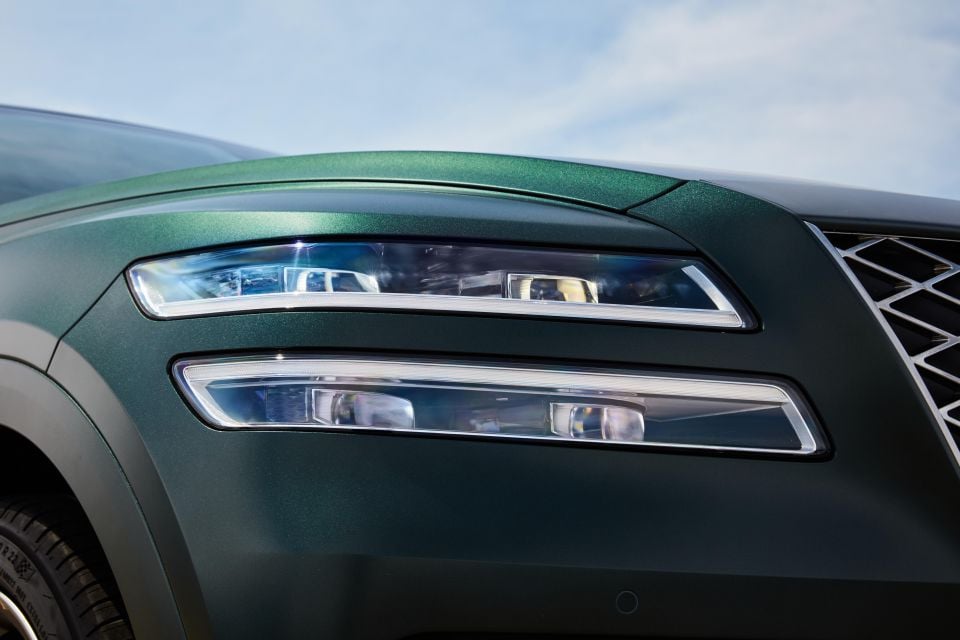
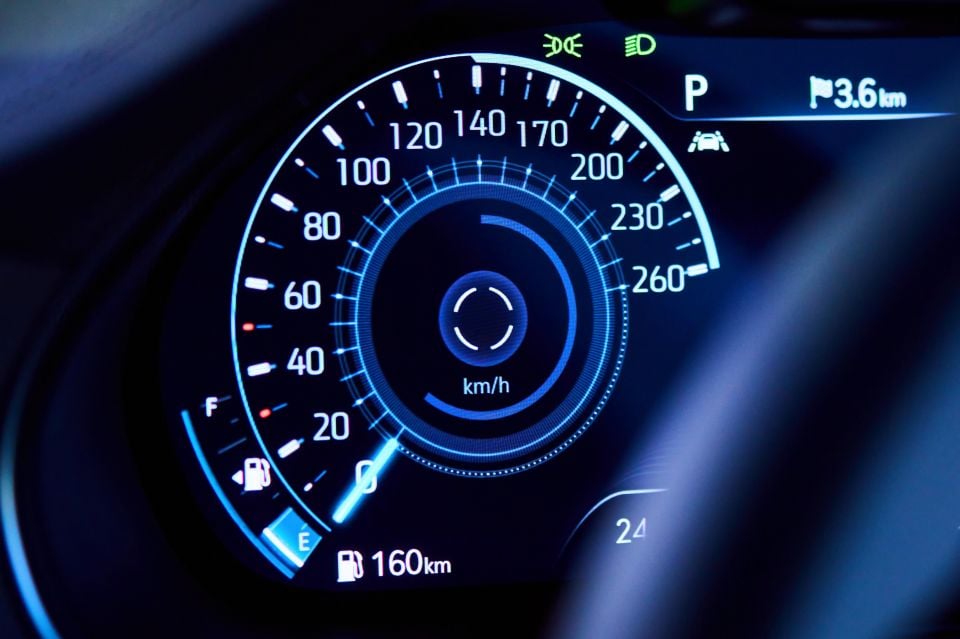
The $10,000 Luxury Package adds plenty of tech. There’s a 12.3-inch digital instrument cluster with 3D technology, plus Genesis’ Intelligent Front Lighting System (with matrix LED technology), remote parking assist, and active noise control that uses technology similar to noise-cancelling headphones and features microphones mounted in the headliner.
There are also the requisite luxury mod-cons: quilted Nappa leather upholstery, suede headliner, an 18-way power driver’s seat with a massaging function, soft-close doors, power-adjustable second and third row seats (just second on the 2.5T RWD), a heated steering wheel, tri-zone climate control, and heated and ventilated second row seats.
The package also includes reverse parking collision avoidance and forward attention warning.
Genesis says it wants to make the buying process as easy as possible, which is why it offers the GV80 well-equipped in every variant and offers just a single option package. We feel the reverse parking collision avoidance deserves to be a standalone option (or standard) as it’s an important safety feature.
Genesis says its inclusion only in the Luxury Package is a packaging restriction, as it’s only available with other features.
On a less serious note, it seems unfair only the driver’s seat gets massaging, especially because it’s one of the better massaging functions in the luxury SUV market.

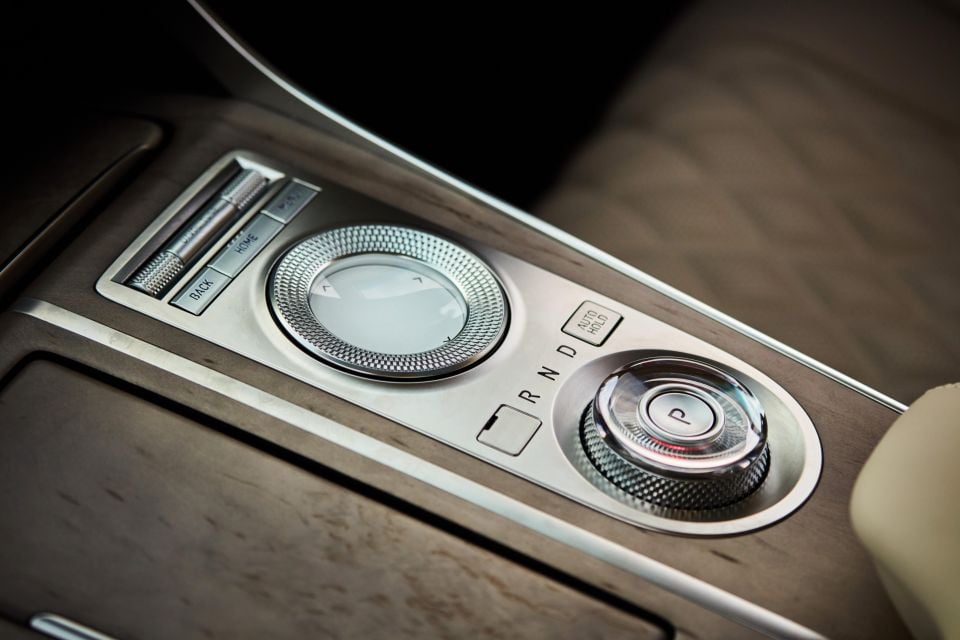
The GV80 has yet to be tested by ANCAP or Euro NCAP so we don’t have an answer on that front.
There’s a raft of safety equipment standard. The blind-spot monitoring includes a camera projection within the instrument cluster, plus blind-spot collision avoidance assist.
The autonomous emergency braking and forward-collision warning includes car, pedestrian and cyclist detection, plus junction turning, junction crossing, and side and oncoming lane-change avoidance functions.
Other safety equipment includes driver attention warning, lane-keeping assist, lane-following assist, rear cross-traffic avoidance assist, rear occupant alert and safe exit alert.
There are 10 airbags, including one between the two front seats. However, the curtain airbags cover the glass area but don’t reach all the way to the C-pillar for third-row occupants.
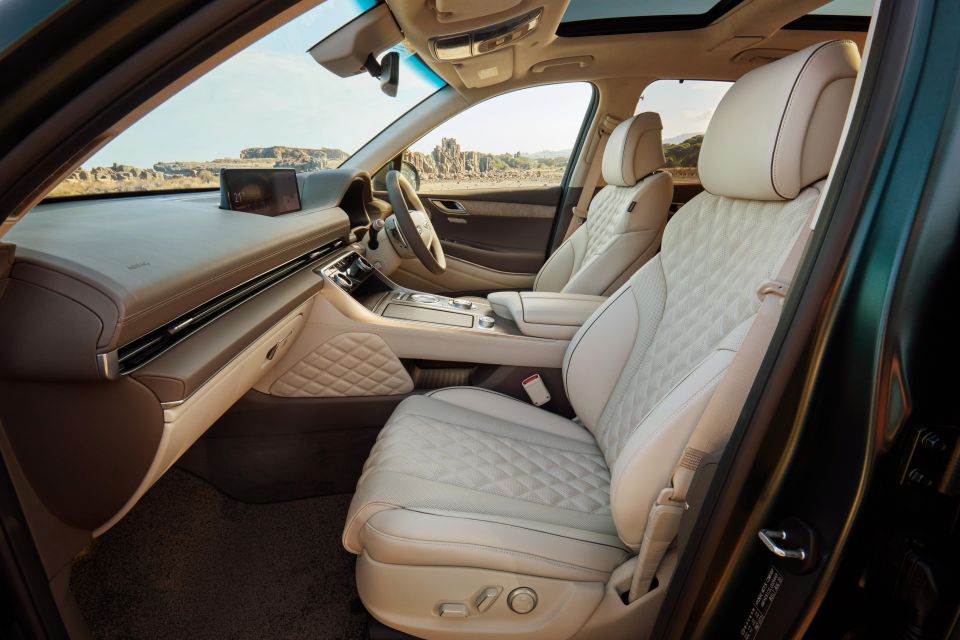
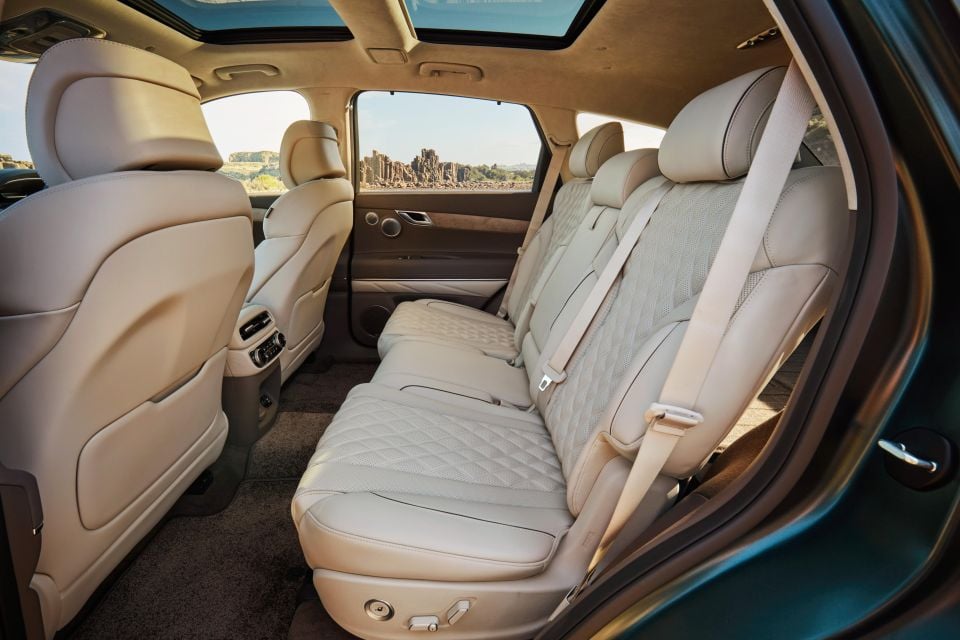
The GV80 interior looks much like the new G80’s, and that’s entirely a good thing.
I spent the first few kilometres of the drive day luxuriating in the second row of a 2.5T with the Luxury Package, seat ventilation turned on and seat reclined.
It’s a comfortable place to sit with ample headroom and legroom, but there’s no rear-seat entertainment system like in the G80. If your children are engrossed in their iPads and can’t hear you, you have the option of using an intercom function in the touchscreen that amplifies the voices of those in the front row.
Moving up front, the seats are even more comfortable and supportive though the lack of an available massaging function for the passenger is puzzling.
The switchgear has nice weighting, including the rotary gear selector that’s constructed of metal and tempered glass. It all looks nice too – anything shiny and silver looks and feels like metal, not painted plastic. You mightn’t think much of the steering wheel, however – it sure polarises opinions and looks like it’s out of some 1970s American land barge, but it is nice and thick.
All Australian-market GV80s feature leather on the dashboard, centre console, and doors. Anything that isn’t wrapped in leather is made of soft-touch plastic, from the bottom of the doors to the glove compartment lid.
The Luxury Package swaps out the standard leather upholstery for softer Nappa stuff, which also means the leather on either side of the centre console is replaced with softer, quilted upholstery.
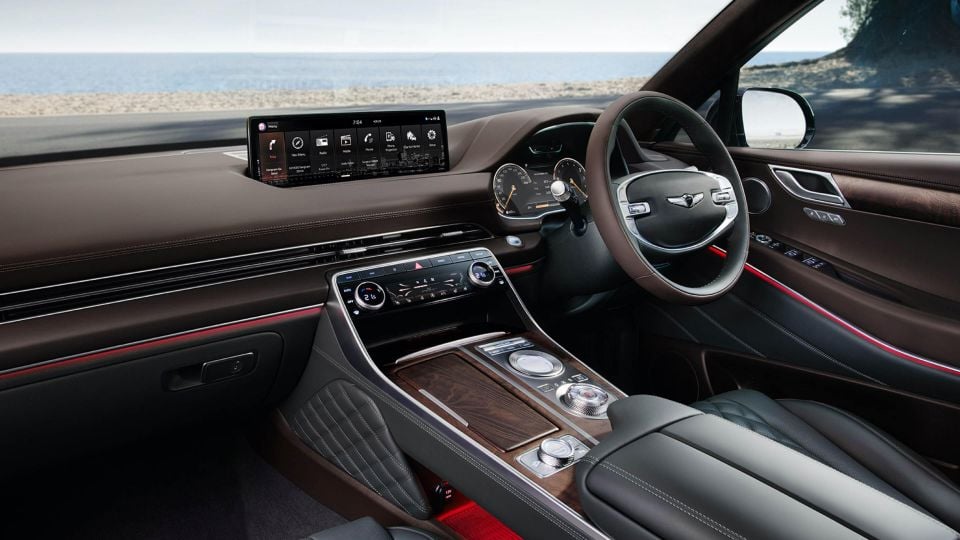
The Smoky Green is the most fascinating colourway. Though the idea of green leather trim seems a bit 1970s Lincoln, it’s actually executed quite well. It’s rather clubby, and with the quilted upholstery it had made me thinking of M’s office in old James Bond films.
The Ultramarine Blue and Dune Beige option is also classy yet distinctive, while the lighter trims look thoroughly modern. Come on, don’t be boring and buy black.
Where the GV80 could use some finessing is its infotainment. The introduction of a brand-specific user interface is much appreciated – the outgoing G70 and G80’s systems looked were essentially identical to their corporate cousins from the Hyundai brand.
The new system is quick, the interface looks slick, and it has some intriguing features like a soundscapes menu where you can play, among other things, the sounds of a busy cafe or a crackling fire.
Unfortunately, the GV80’s sizeable 14.5-inch touchscreen is just too far away from the driver. That makes it a reach, while smartphone mirroring displays on the left half of the screen.
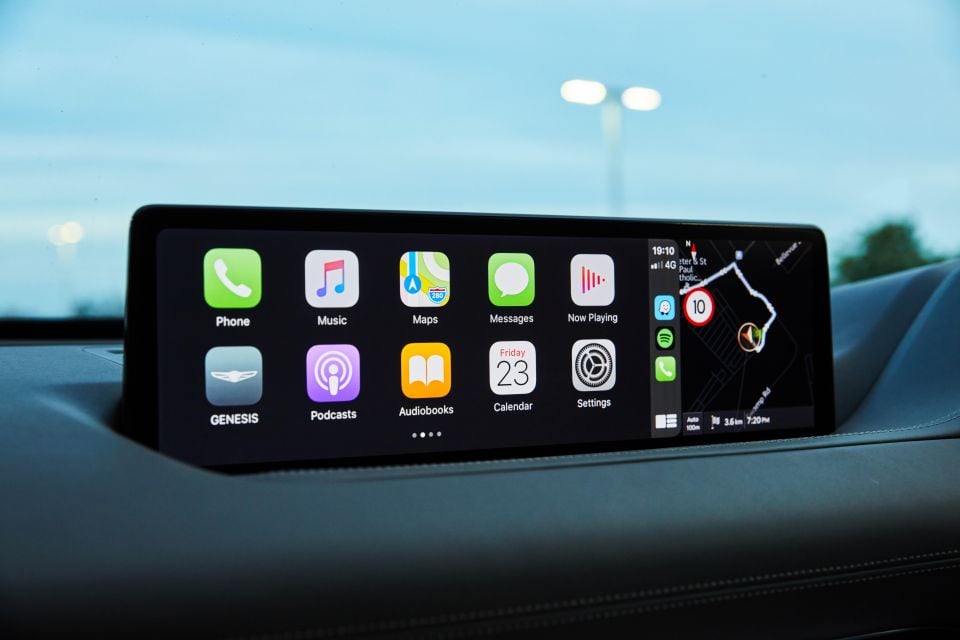

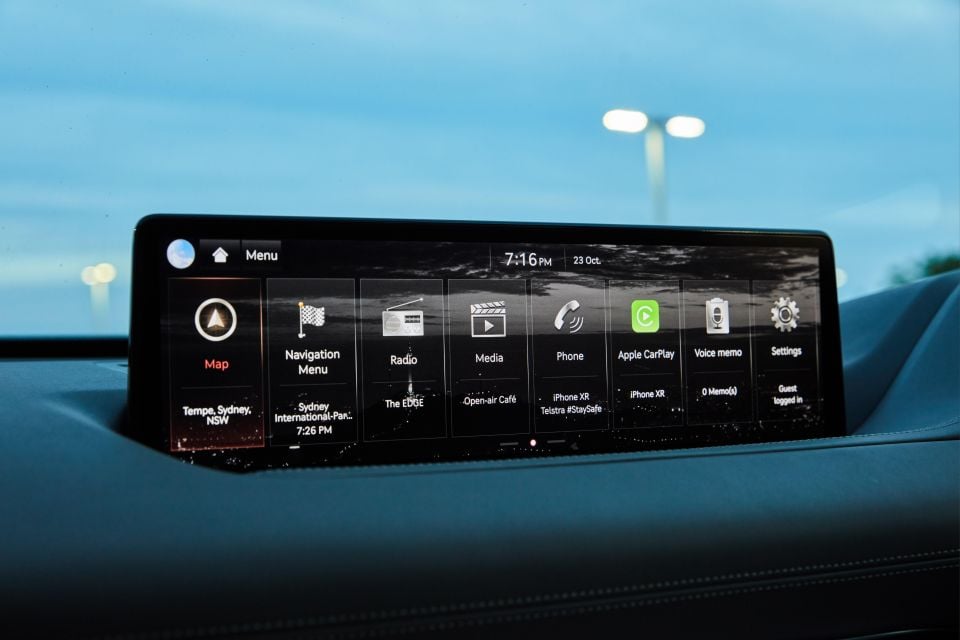
Fortunately, there is a controller, plus some handy physical buttons beneath the screen that will take you to the media and navigation screens, among others. The Home button, however, is located down near the controller.
The infotainment controller, which features handwriting recognition, feels appropriately premium, though it’d be more tactile if it was raised instead of nearly flush with the centre console. Its proximity to the rotary gear selector, however, probably explains why Genesis didn’t go that route.
Just above these on the centre stack are the climate controls, which are located on a glass panel. These controls are touch-capacitive and have some haptic feedback.
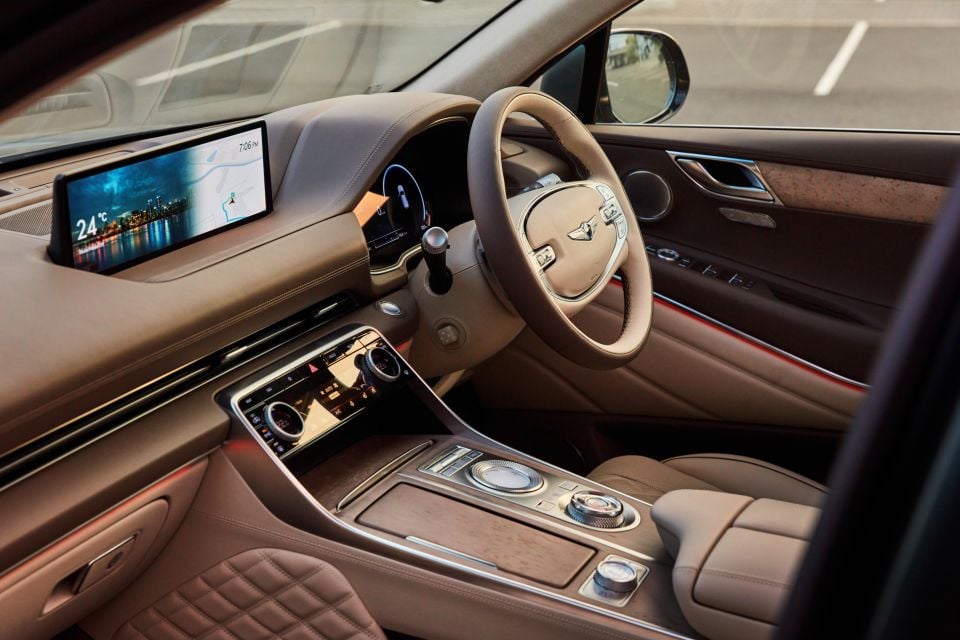

Disappointingly, the voice activation feature – activated via a button on the steering wheel – will only work with Apple CarPlay or Android Auto. We’d also love to see a USB-C port or two in the cabin.
Perhaps the only non-premium touch in the interior is the base instrument cluster, which looks fresh out of the corporate parts-bin. It’s easy enough to read and it does include Hyundai’s trick new blind-spot monitoring camera view, which activates when you indicate, but it’s not especially upscale in appearance.
Genesis has been touting its trick stereoscopic 3D instrument cluster, which is included in the Luxury Package. It’s nothing revolutionary to behold but it looks appropriately attractive and premium, and recognises the driver’s eyes. It’ll alert you if you look away from the road for too long, or if you yawn too frequently.
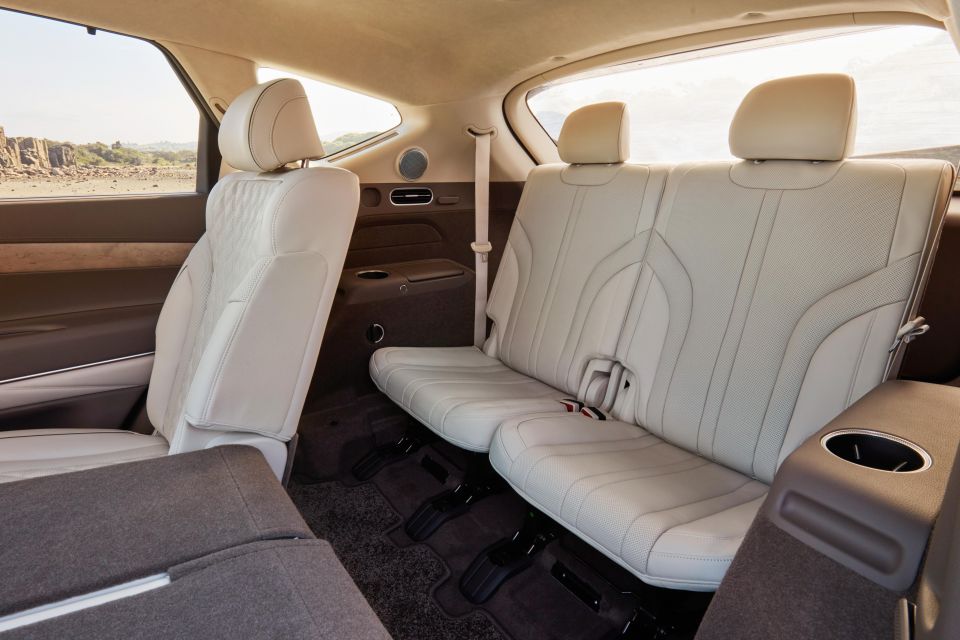
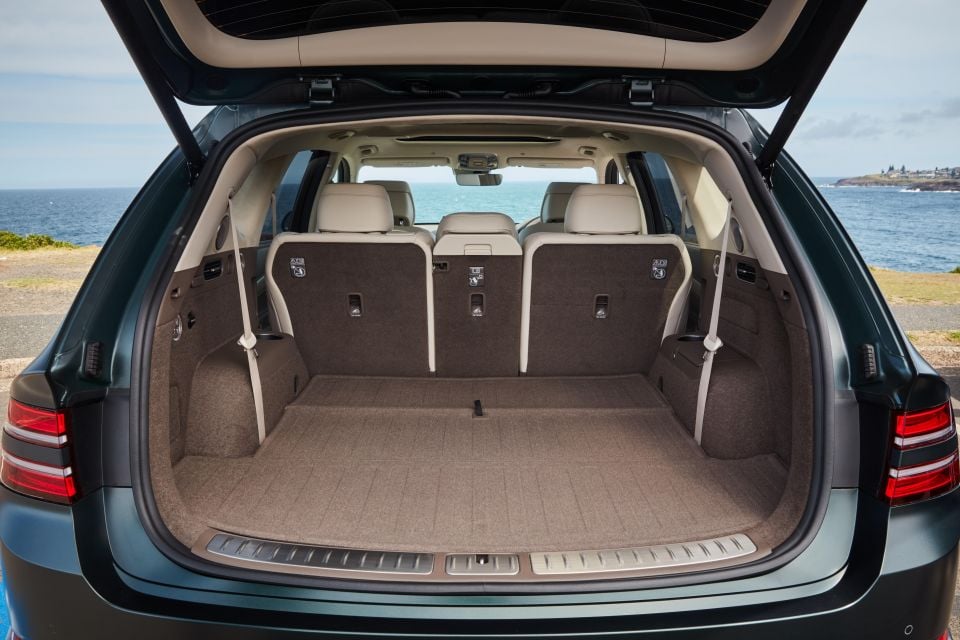
Clambering into the third row is a challenge for anybody who isn’t a child or a gymnast. Once you’re back there, it’s not terrible for adults for short trips and therefore will be fine for children. The seats fold flat into the floor but feel like proper seats.
Somebody 180cm or so tall will be sitting in a slightly knees-up position with the second row all the way back, but you can adjust the second row without ruining legroom for those occupants. Where the third row is less comfortable is in headroom – if you’re around my height (180cm) your head will brush against the roof. Still, for short trips it’s tolerable.
The GV80 has 735L of luggage space in the 2.5T RWD and 727L in all other variants. This expands to 2152L and 2144L, respectively. That stacks up well against rivals like the Mercedes-Benz GLE.

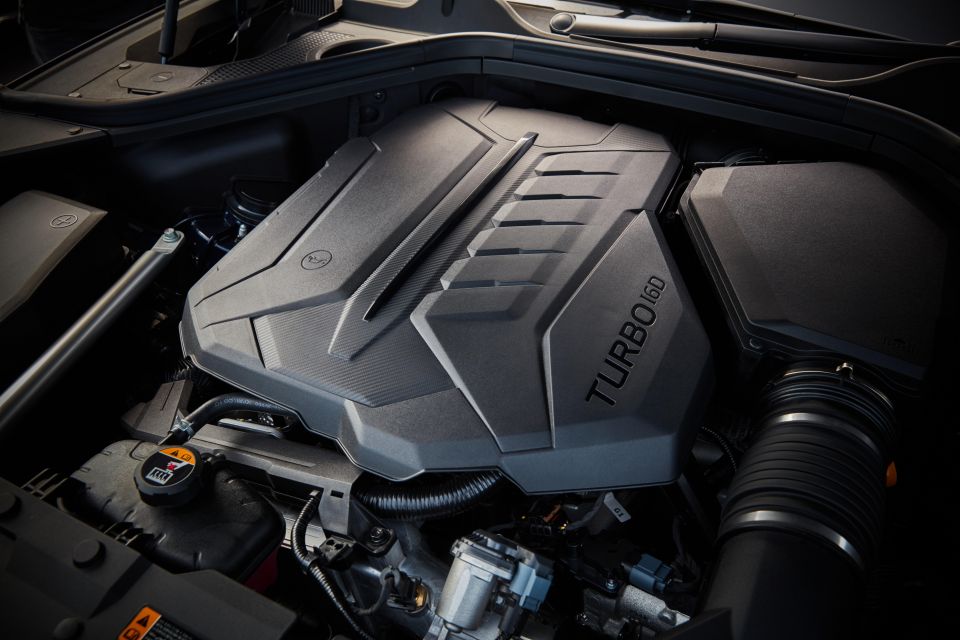
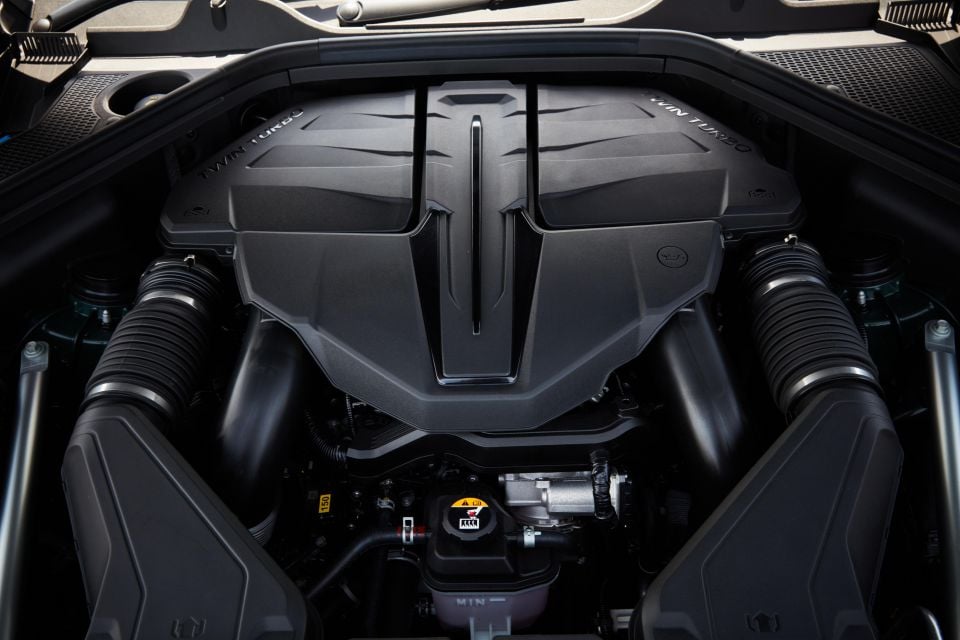
The Genesis GV80 is available with three engines. The base turbocharged 2.5-litre four-cylinder engine produces 224kW of power and 422Nm of torque, and is available with either rear- or all-wheel drive.
The 3.0-litre turbo-diesel inline six produces 204kW of power and 588Nm, while the turbocharged 3.5-litre petrol V6 generates 279kW of power and 530Nm of torque. Both are available only with all-wheel drive.
All engines use an eight-speed torque converter automatic transmission.
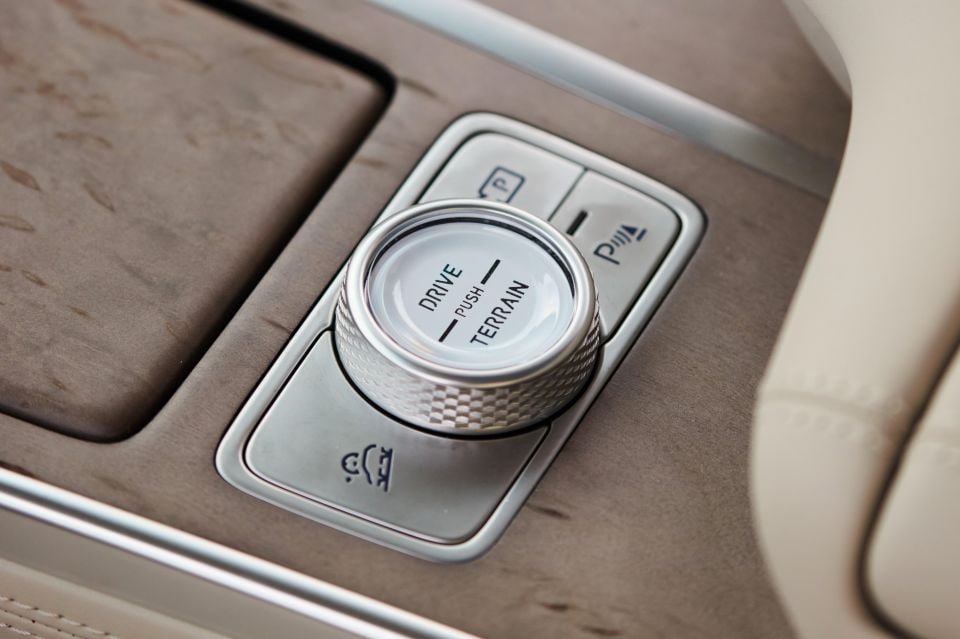
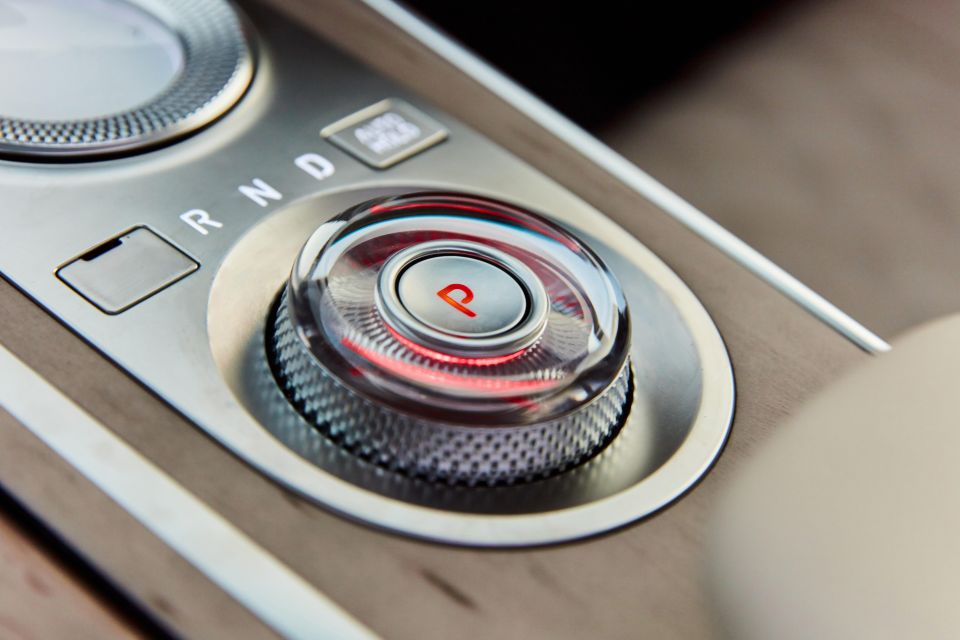
Where expert car reviews meet expert car buying – CarExpert gives you trusted advice, personalised service and real savings on your next new car.
Genesis quotes 0-100km/h times of 6.9 seconds for models with the 2.5-litre, 6.8 seconds for the 3.0D, and 5.5 seconds for the 3.5T.
The GV80 consumes 9.8L/100km on the combined cycle in the 2.5T RWD, 10.4L/100km in the 2.5T AWD, 8.8L/100km in the 3.0D and 11.7L/100km in the 3.5T. As our test loop was mostly country driving, we couldn’t really get a representative fuel economy figure.
Every GV80 variant has a braked towing capacity of 2722kg and an unbraked capacity of 750kg, with a downball weight of 182kg.
There’s really not a dud powertrain in the bunch.
At the launch we drove each variant except for the all-wheel drive 2.5T, spending most of the time in the rear-wheel drive 2.5T. The driving route was predominantly country roads, some of which were unsealed and had been ravaged by recent flooding.
Each model boasts a smooth, refined powertrain. The 2.5T, in particular, doesn’t feel like a plebeian base model with a good amount of mid-range punch and a surprisingly sporty, if mostly muted, engine note.
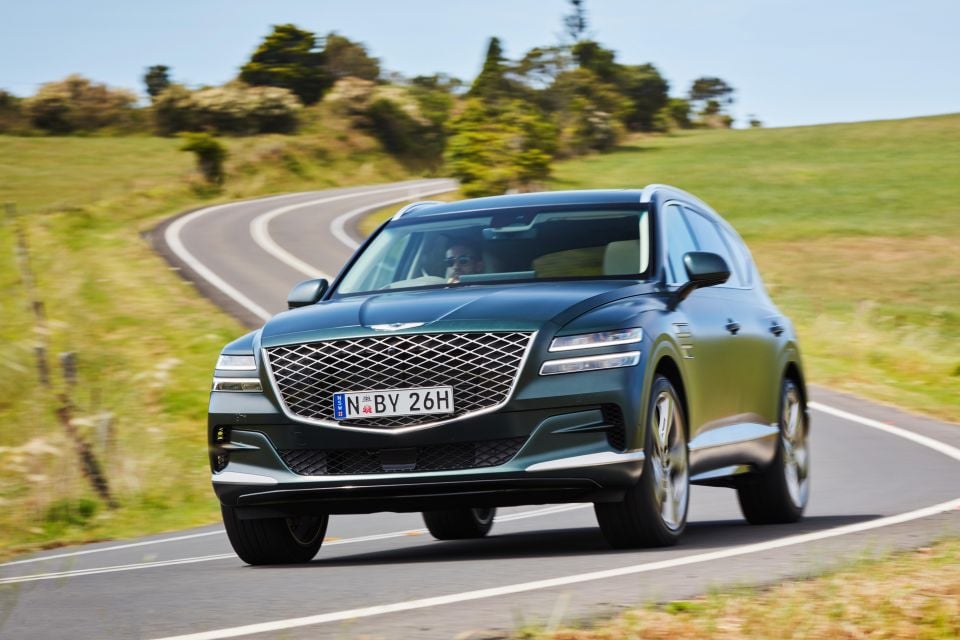
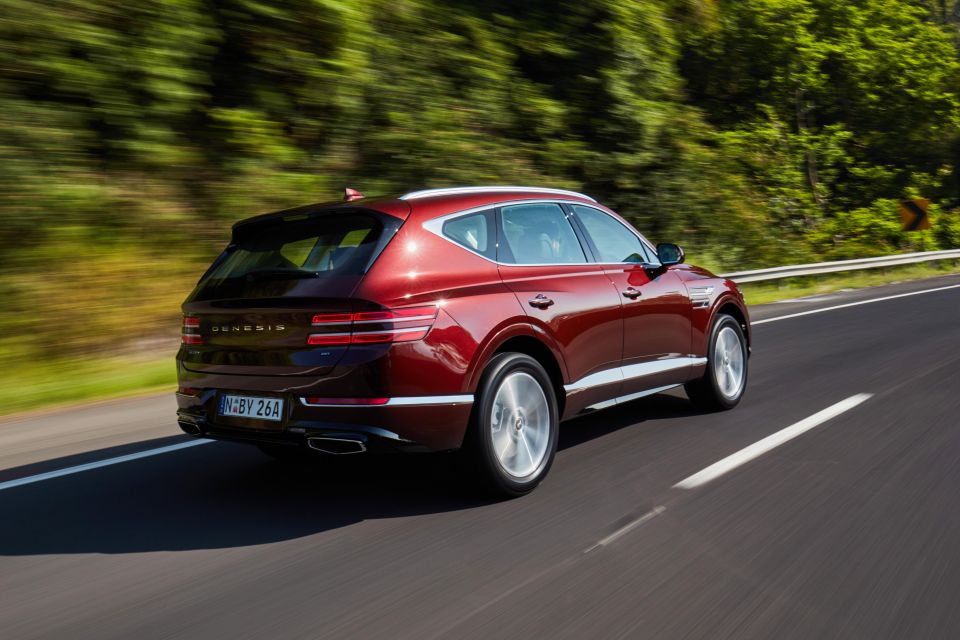
The 3.5T feels punchier but doesn’t quite push you back in your seat. There’s a slight snarl to the engine note if you really punch it but this isn’t some quasi-X5 M, with an emphasis on effortless, refined power delivery.
All engines use an eight-speed automatic transmission developed in-house, which shifts smoothly and imperceptibly. We never felt the need to intervene with the paddle shifters.
Given the GV80’s mission, we found the most impressive powertrain to be the turbo-diesel six. It’s virtually unrecognisable as a diesel in terms of noise and has the nice, flat torque curve you’d expect. It’s a torquey, flexible engine and it’s ever so slightly quicker to 100km/h than the 2.5T while being more fuel efficient.

The new architecture underpinning the GV80 and G80 results in a nicely balanced chassis, and the GV80 has received local suspension tuning. The adaptive suspension features road preview technology, a first for a Genesis, which uses the front camera to scan the road for potholes and speed bumps and adjusts the dampers accordingly.
During our time with the 3.0D and 3.5T, we mostly kept the adaptive suspension in the default Comfort mode as it offers a good combination of ride quality and body control. Sport mode firms it up a bit and, like the 2.5T, also adjusts the shift pattern, electronic limited-slip differential, and throttle response, but it’s unnecessary.
Likewise, the 2.5T’s passive set-up strikes a similarly good balance.
The 22-inch alloy wheels of the 3.0D and 3.5T make for a slightly busier low-speed ride around town but once you pick up the pace, the difference between the two wheel set-ups feels negligible. In particular, rutted gravel roads saw the GV80 furnish a pleasantly comfortable ride in Comfort mode.
There’s a good amount of suspension travel so the GV80 has a nice, loping ride quality.
Wind noise only picks up at extra-legal speeds, while each engine is muted. Only tyre roar from the Michelin Sport 4 rubber proves especially loud, and this was noticeable on some of Canberra’s freeways. We didn’t notice much of a difference between variants with the active noise control and those without.
Steering is nice and manageable around town. It’s a touch light overall but there’s still some feel here, while flicking to Sport mode adds some more weight. That controversial steering wheel feels good in your hands, too.
While we got the GV80s thoroughly dirty on some unsealed, flood-ravaged roads, we didn’t venture off road. Genesis claims the GV80 is capable of tackling more than dirt tracks and there are multiple terrain modes to select.
However, the GV80 only has a spare tyre in the rear-wheel drive 2.5T, and it’s only a space-saver. All other variants have a tyre repair kit.

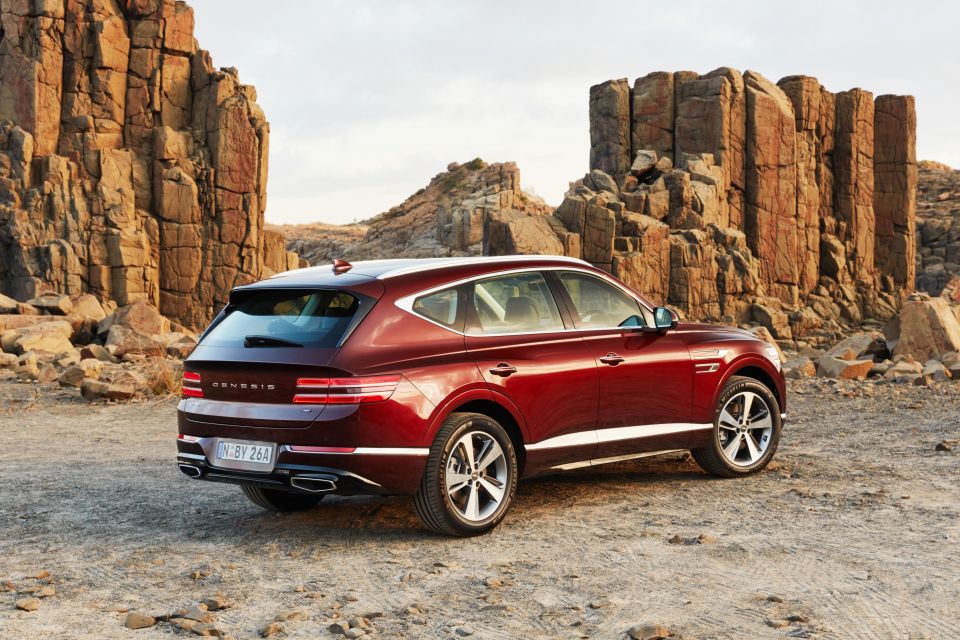
The GV80 has one of the better after-sales packages in the luxury market, including a five-year, unlimited-kilometre warranty and five years of free 24/7 roadside assistance. Genesis also plans to introduce a guaranteed future value program.
It requires servicing every 12 months or 10,000km in the petrol, whichever comes first. Servicing intervals are longer in the diesel at 12 months or 15,000km.
Genesis offers complimentary scheduled servicing for the first five years/50,000km in the petrol and five years/75,000km in the diesel. It’ll also pick up and return your GV80 from servicing appointments and loan you a courtesy vehicle.
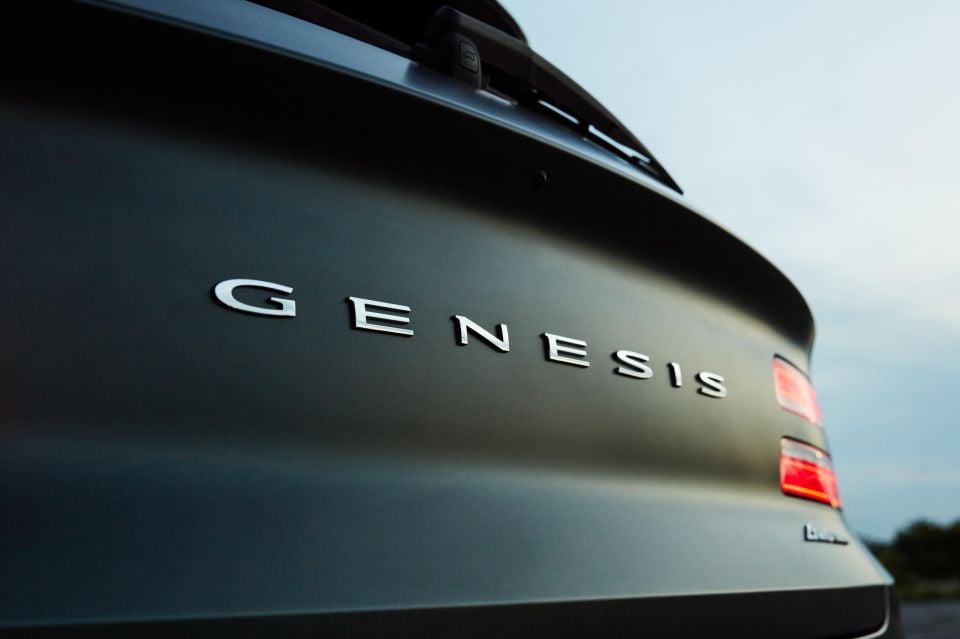
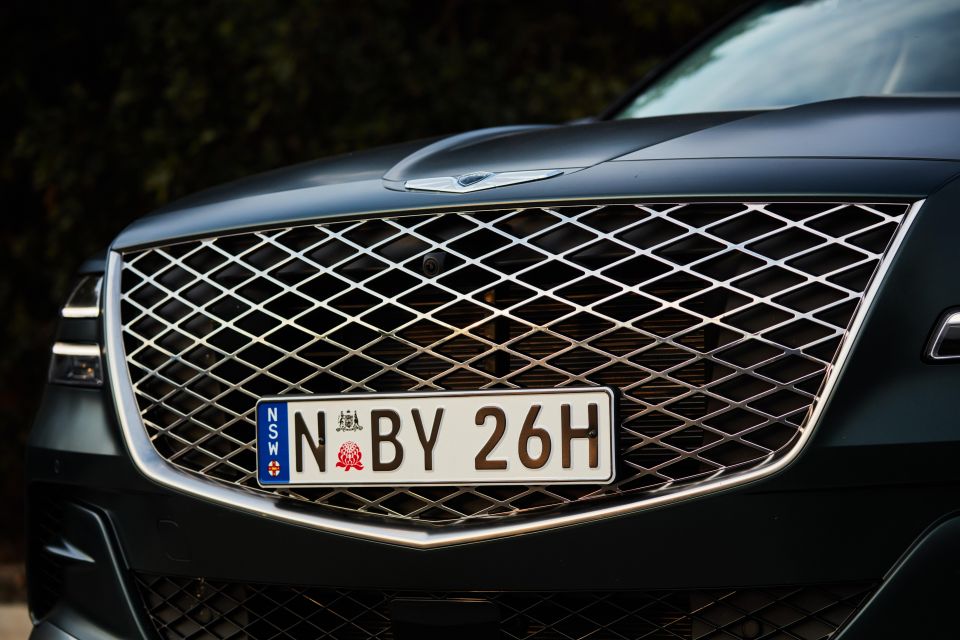
Genesis knows it’s got an uphill battle against BMW, Mercedes-Benz and Audi, established nameplates with an abundance of cachet. That’s why it’s touting the strength of its product. And indeed, its latest product stacks up extremely well.
Executives are all too used to being asked if Genesis is the next Infiniti in Australia, but the Korean brand is following an entirely different playbook to hopefully get an entirely different result.
That means it’s sticking with fixed pricing, even as most rivals are willing to make a deal. It’s persisting with its company-run studios, even while its rivals offer sprawling dealer networks. It also means, though, that unlike Infiniti it’s hitting the ground running with fresh product and plenty more to come.
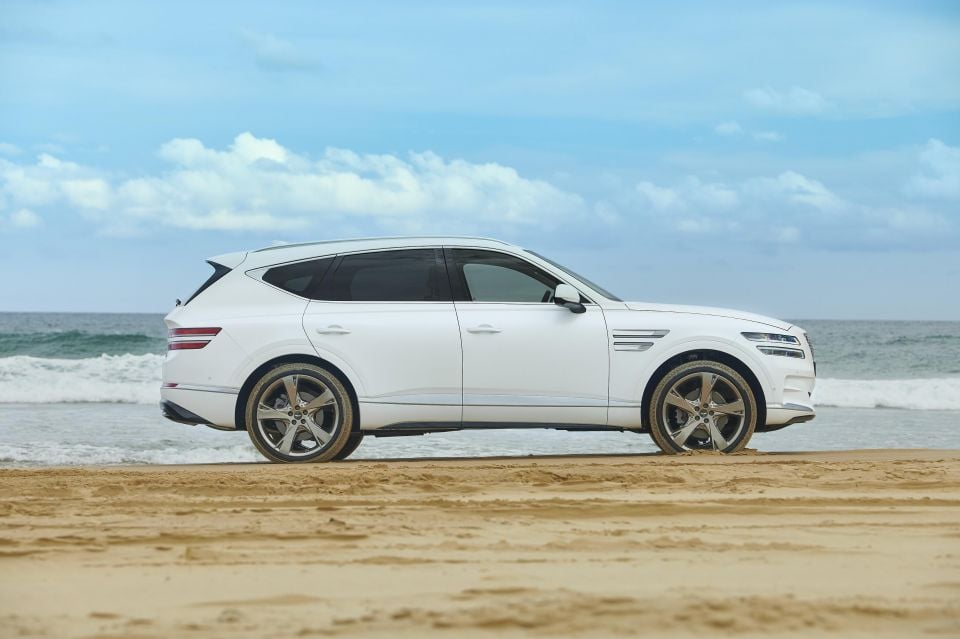
While we’re anxious to spend some more time with the GV80 and, ideally, compare it directly with rivals like the BMW X5 and Mercedes-Benz GLE, we can confirm this is an impressive initial offering from Genesis.
Its interior appointments are lovely, its pricing – at least when comparing its RRP with that of similarly-specced rivals – undercuts the Germans and there’s a range of compelling powertrains on offer.
Its driving manners are reminiscent of the similarly-priced Volkswagen Touareg but it offers a classier cabin. It also feels more special and more dynamically poised than a Lexus RX.
Acoustic glass and active noise control notwithstanding, we think the cabin could stand to be more hushed. The lumping of everything in a single option package makes things easier to comprehend but is the very antithesis of a la carte ordering, while the lack of curtain airbags for the third row is a frustrating omission.
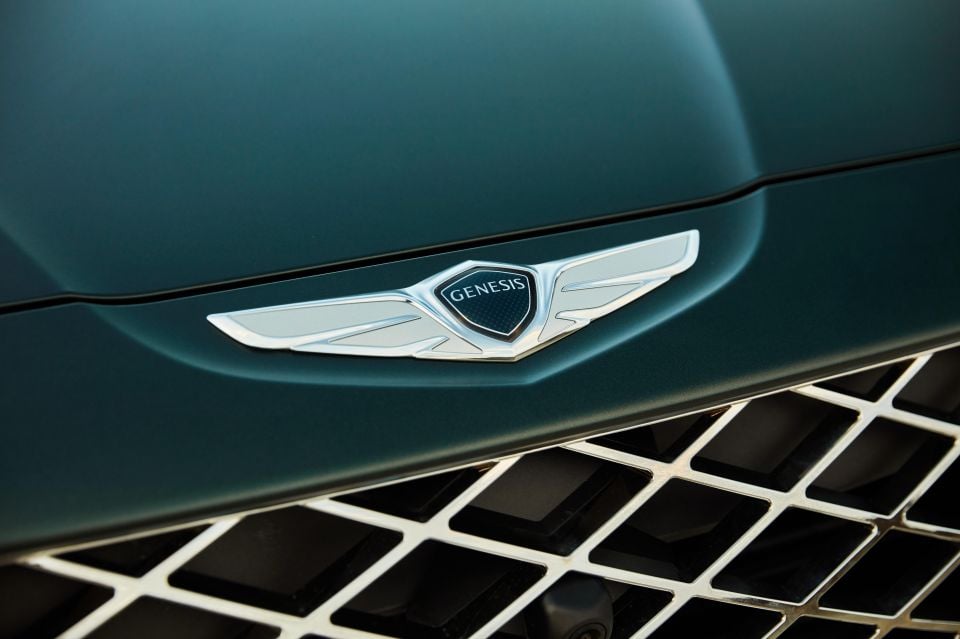
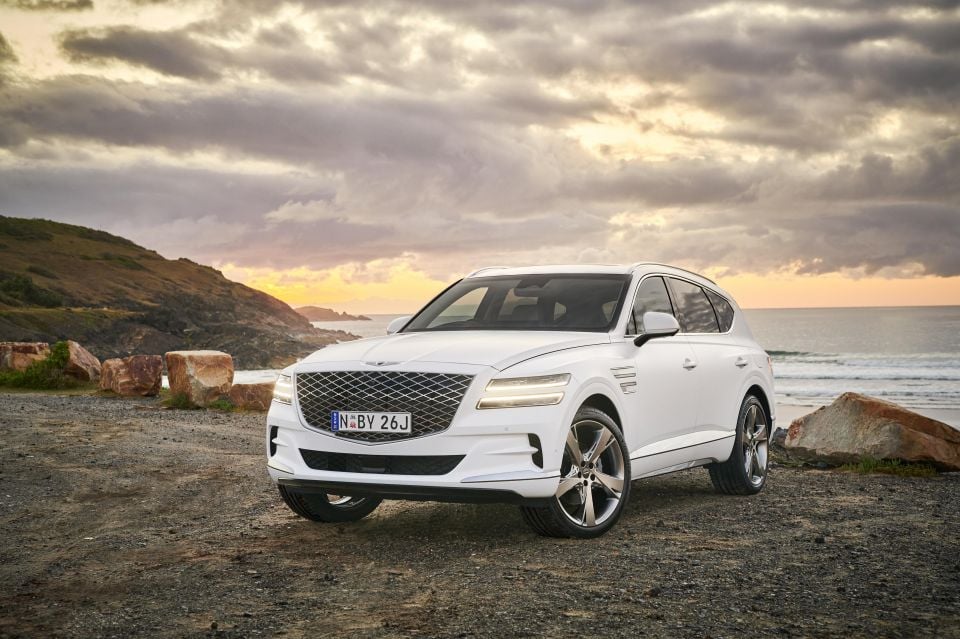
Genesis’ stubborn insistence on fixed pricing is also going to potentially turn off some luxury car buyers who are used to being able to haggle, while its limited dealer network is going to give tyre-kickers pause even though the company touts its Genesis To You program where they’ll bring one to you to test drive.
Though it’s from an upstart brand, the GV80 doesn’t feel like some weird, left-field choice. It’s got the luxury, technology and presentation expected of a large luxury SUV.
Genesis just has to continue fighting against entrenched luxury car buyer attitudes. Having good product helps, and with the GV80 it has it.
Where expert car reviews meet expert car buying – CarExpert gives you trusted advice, personalised service and real savings on your next new car.
William Stopford is an automotive journalist with a passion for mainstream cars, automotive history and overseas auto markets.


Josh Nevett
2 Days Ago


CarExpert.com.au
3 Days Ago


Damion Smy
5 Days Ago


Derek Fung
5 Days Ago


Ben Zachariah
8 Days Ago
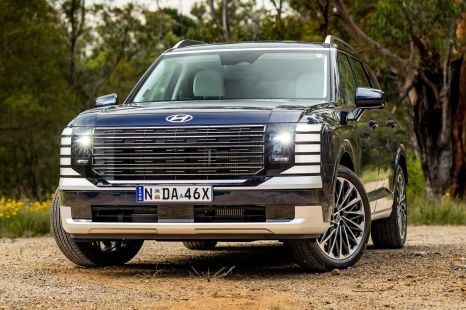

Matt Campbell
11 Days Ago